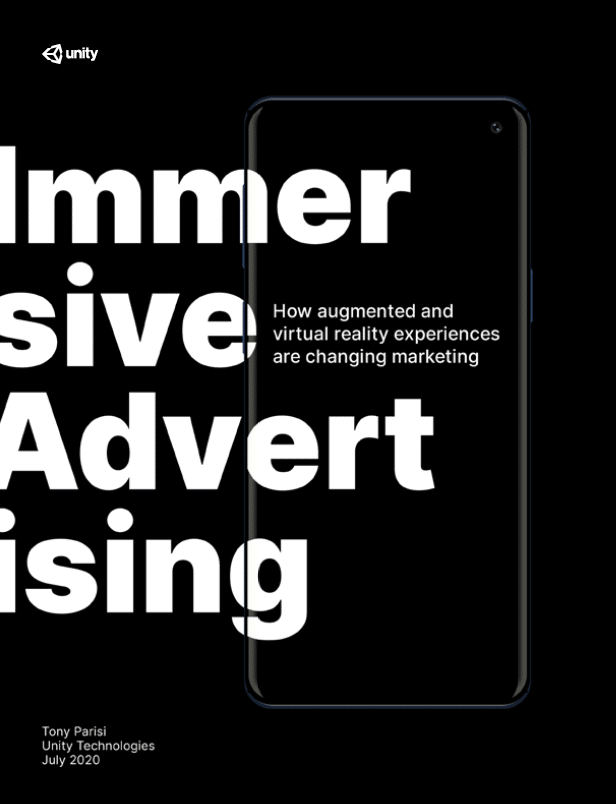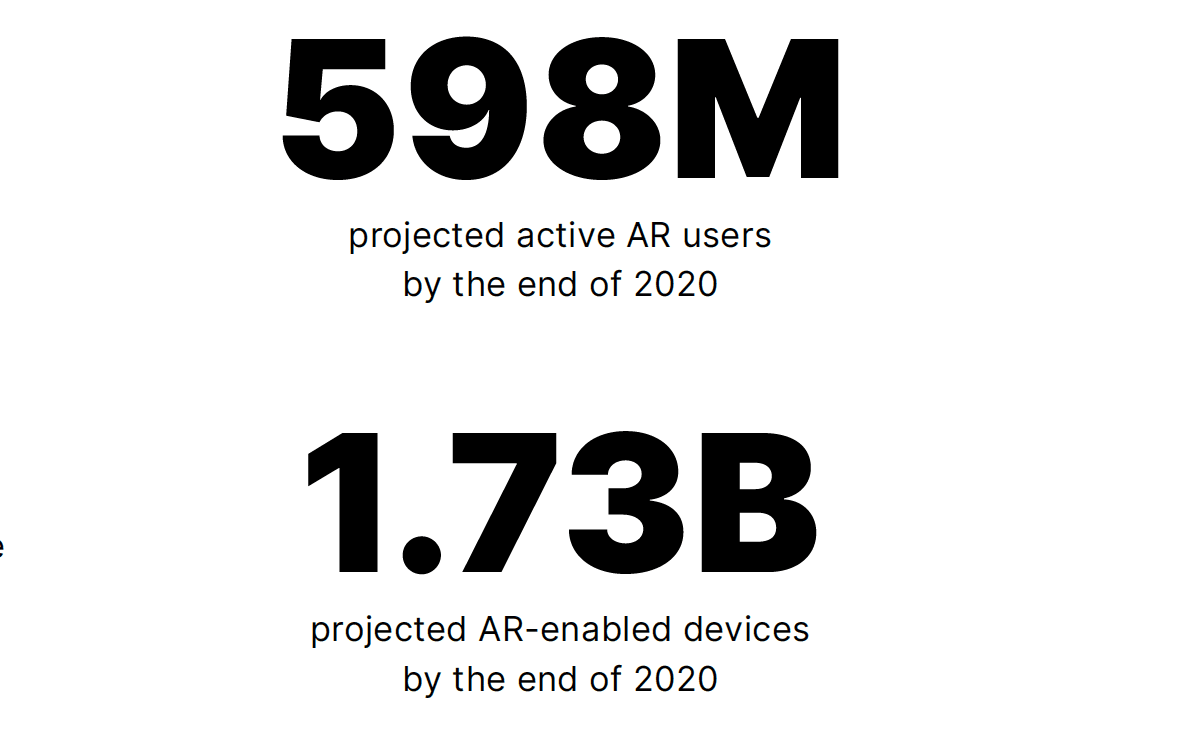
![]() “Vantage” is AR Insider’s editorial contributor program. It enlists spatial computing executives and innovators for first-hand strategic insights. Find out more or contact us to participate here. Authors’ opinions are their own.
“Vantage” is AR Insider’s editorial contributor program. It enlists spatial computing executives and innovators for first-hand strategic insights. Find out more or contact us to participate here. Authors’ opinions are their own.
Technology and Consumer Behavior are Trending Immersive
by Tony Parisi
 This article is excerpted with the author’s permission from the Unity Report: Immersive Advertising: How Augmented and Virtual Reality Experiences are Changing Marketing.
This article is excerpted with the author’s permission from the Unity Report: Immersive Advertising: How Augmented and Virtual Reality Experiences are Changing Marketing.
The computing landscape is undergoing sweeping changes in both technology infrastructure and consumer behavior. The wide availability of low-cost mobile hardware and software supporting real-time 3D graphics, machine learning, computer vision, and virtual/augmented reality has upleveled the potential for creating immersive user experiences at scale.
There are nearly two billion augmented reality-capable mobile devices on the market today, with a projected 598 million active AR users by the end of 2020. This promising new market has been tapped by experiences and applications deployed across gaming, entertainment, news, social media, education, shopping, and enterprise.
But this is just the beginning. Within a few years, ubiquitous 5G networking will power the delivery of interactive applications with mind-blowing cinematic production value to every device. We should expect to see content and infrastructure continue to co-evolve, in much the same way that rich media and 4G networks have developed together over the past decade – driven by a combination of changes in consumer behavior, computing capabilities, and commercial success.

The online experience is going virtual
While the larger social networks still dominate in terms of numbers, change is afoot. The latest generations of mobile users are on Snapchat and TikTok – platforms that provide the latest tools for self-expression and personalization. Increasingly, a significant and growing portion of the content created and shared on these networks is immersive.
Snap – the self-proclaimed “camera company” that continues to drive innovation in computer vision and augmented reality – has more than 160 million Snapchat users who interact with AR every day. From face filters that let a user transform selfies into something ultra-cool or fantastical, to the Landmarkers feature that allows creators to bring real-world places to life with compelling animated content, Snap has set the bar on user-generated immersive content.
Facebook has fast-followed Snap in recent years, providing excellent support for augmented reality filter creation on Facebook, Instagram and WhatsApp through their Spark AR platform. Meanwhile, TikTok is changing the social game again with micro-entertainment and bursts of distraction. Videos are fun, short and digestible anytime and anywhere. They offer a sense of personal expression, and engagement is driven via community-shared but ephemeral content and experiences. TikTok is experiencing explosive growth.
“Taken together, we are talking about hundreds of millions of social network members worldwide who are exposed to augmented reality on a daily basis. These users, in particular the millennial and Generation Z cohorts, are the first generations for whom immersive content is native.”
Looking at Apptopia data, TikTok downloads hit 327 million globally from July through December in 2019; in 2020, downloads grew to 417 million from January through June. According to Sensor Tower, TikTok was the second most-downloaded app in 2019, after WhatsApp.
TikTok recently announced that it’s bringing augmented reality ads to the platform. This is their first AR offering, available only to brands, but it would be reasonable to expect the service to enable AR creation for their users as well in the near future.
Taken together, we are talking about hundreds of millions of social network members worldwide who are exposed to augmented reality on a daily basis. These users, in particular the millennial and Generation Z cohorts, are the first generations for whom immersive content is native and unsurprising – in fact, it’s expected. Immersive media is the content they have grown up with and will demand in the coming years; nothing less will satisfy.
An additional consumer trend worth noting here is the emergence of the massive multiplayer video game as an online community. Games like Fortnite and Animal Crossing are transcending play, becoming social platforms in their own right.
On April 23, 2020, players of the battle-royale video game Fortnite logged in to watch a 3D digital avatar of Travis Scott teleport around a beach, tower against a blood-red sky, and launch audience members into outer space. It was all part of a 10-minute virtual concert, the game’s biggest event ever, and 12.3 million players were reported to have tuned in. The Travis Scott attendance surpassed the previous Fortnite milestone for the over 10 million players who logged in for an in-game Marshmello DJ set in 2019.
With social media becoming more immersive, and immersive games growing into venues for social gatherings, the online experience is clearly going virtual. The line between the real and virtual worlds is blurring, creating fresh opportunities for brands to engage consumers, not only in these novel venues, but with new types of media.
 Tony Parisi is head of VR/AR brand solutions at Unity Technologies. The report excerpted in this article can be read in full here.
Tony Parisi is head of VR/AR brand solutions at Unity Technologies. The report excerpted in this article can be read in full here.
